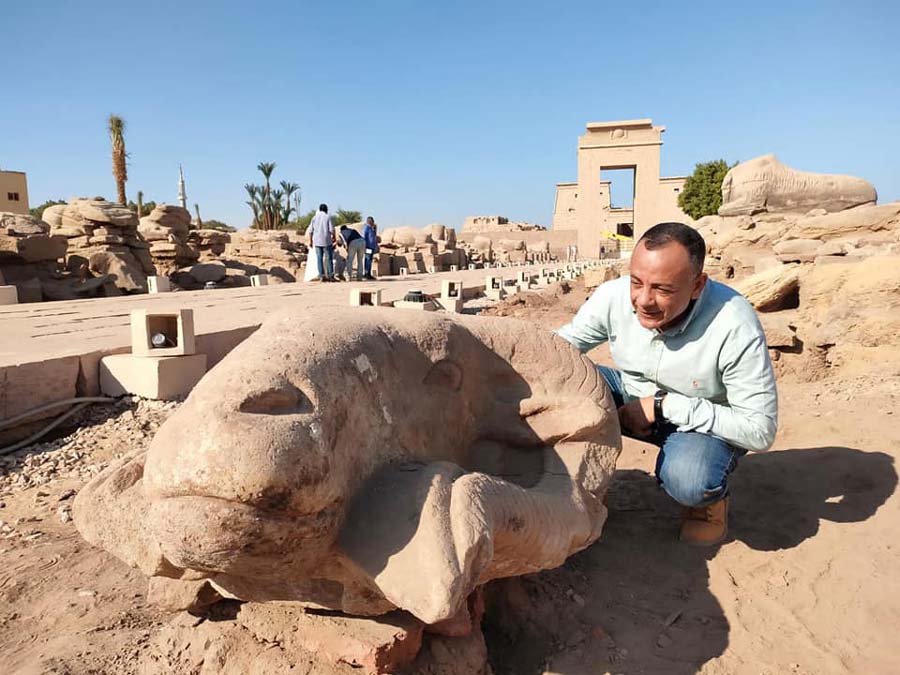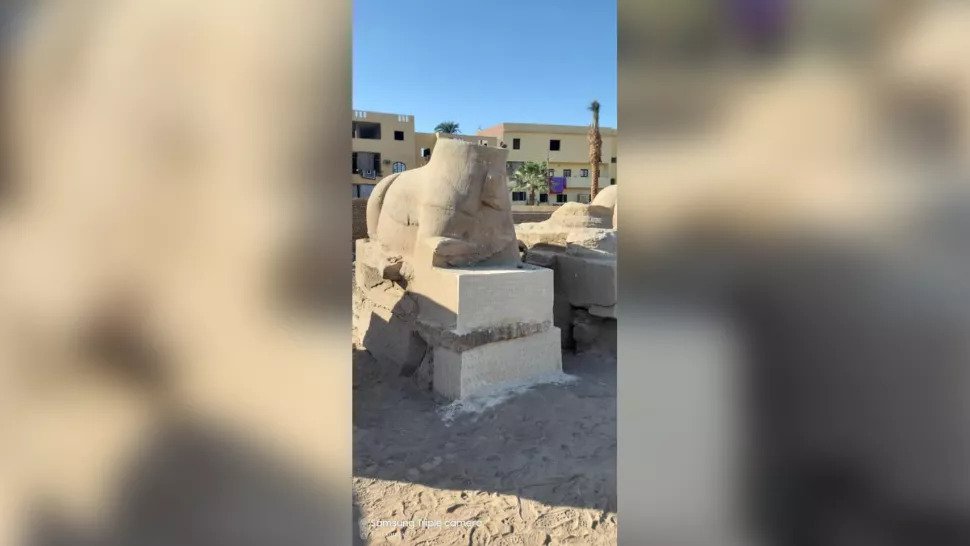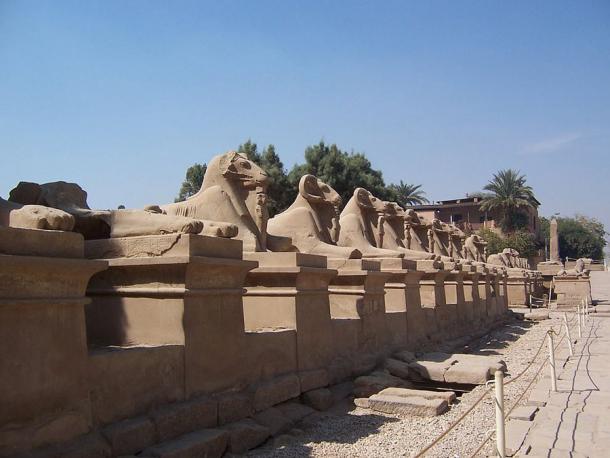Giant ram head statues found on ‘Avenue of Sphinxes’ in Egypt
Three giant statues of ram heads — at least one of which had a cobra on top — have been discovered south of Karnak Temple in Luxor, Egyptologists announced.
Karnak Temple was built between roughly 4,000 and 2,000 years ago, and much of it is dedicated to Amun-Ra, a god associated with the sun and Thebes, the capital of ancient Egypt (now the modern-day city of Luxor). The temple complex covers over 250 acres (100 hectares).
On Oct. 11, the Egyptian Ministry of Tourism and Antiquities announced that three giant ram heads had been found by an Egyptian archaeological team south of a gateway built by the Ptolemies, a dynasty of pharaohs descended from one of Alexander the Great’s generals that ruled Egypt between 305 B.C and 30 B.C.


In ancient times, these ram heads were part of three larger statues that had the bodies of creatures that looked a bit like sphinxes.
The statues featured in a large avenue of ram-headed statues that went south, running for 1.7 miles (2.7 kilometres) between Karnak Temple and Luxor Temple, Mustafa Waziri, secretary-general of the Supreme Council of Antiquities, told the news site al-Monitor.
This avenue is often called the “avenue of the sphinxes” and consisted of around 700 statues.
“An estimated 700 sphinxes lined the route between Karnak and Luxor temples and its magnificence can scarcely be imagined,” wrote Elizabeth Blyth, an independent scholar in her book “Karnak: Evolution of a Temple” (Routledge, 2006). While many of the surviving sphinxes date to the reign of Nectanebo I (380-362 B.C.) artwork suggests that the avenue existed at least as early as the 18th dynasty (1550-1295 B.C.), wrote Blyth.

Egyptologists are in the process of conserving the ram heads and will put them back on statues showing the bodies of the creatures, Waziri said in the statement.
READ ALSO: EGYPT’S SECRETS REVEALED: POSSIBLY A SECOND SPHINX & MYSTERIOUS HIDDEN CHAMBERS??
Archaeologists unearthed another discovery — the remains of a cobra statue — Waziri announced Oct. 17 on his Facebook page. This cobra statue would have originally been on top of one of the ram heads, so the conservation team plans to put it back on, Waziri said.
The age of the statues is being investigated, but Waziri told Al-Monitor that the design of one of them suggests that it may date back to the reign of Amenhotep III, who ruled Egypt between 1390 B.C and 1352 B.C.,
According to the Metropolitan Museum of Art’s list of Egyptian rulers, and was the grandfather of King Tutankhamun. Excavation, analysis and conservation work is ongoing.





